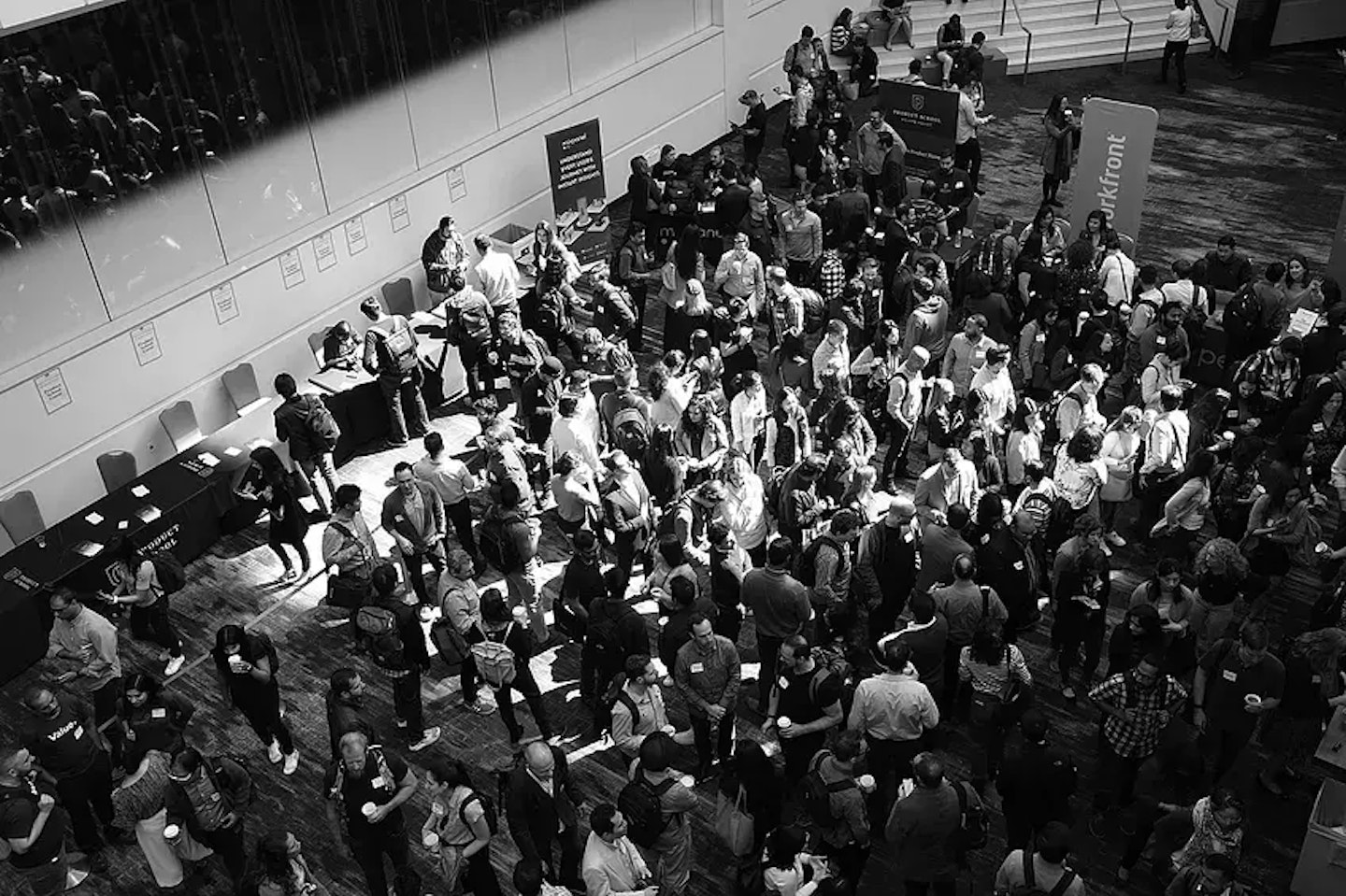
This week, I decided to share a few thoughts about industry conferences and events that had been simmering for about a year.
After being turned away from multiple conferences (local and national), I felt that there needed to be a hand raised asking why things are the way they are.
In a nutshell, the rub is that I have been consistently told that in order to attend, I must pay for company memberships, conference fees, and a separate sponsored booth fee to gain entry.
As someone providing a service to the industry, I must check those boxes before I can walk in the doors, listen to speakers, shake a few hands, and connect with others.
My main objection has been that requiring payment for a booth doesn't make sense for every company across the board, which seems logical.
But, oftentimes, there is no other way offered to attend as someone working in the industry and who is not an owner or operator.
(Unless I were to slide in under the radar along with a partner or flat-out sneak my way in some other way. I have seen that, and it’s another story!) 😊
I suggested a few high-level thoughts on improving this roadblock:
The feedback that came back to me was overwhelmingly in line with my experiences, with many on the service/vendor side sharing their experiences privately.
Others on the operator side voiced frustrations about the lack of quality content at many conferences and the friction in pay-to-play vendor outlay at these events.
One of the more shocking takeaways after my post had to do with the sheer amount of cash poured into these events for the chance at converting a new business relationship. Two main buckets emerged in DMs:
When we step back and think about numbers, it points to quite a few things.
But one eye-opening thought I had was this:
Suppose 1% of revenue was marked for conferences for a year. That half a million would align with $50M software companies.
For newer software companies making, theoretically, $2M in revenue, are they paying $20K all year? No, they’re paying that for one event’s booth fee!
As a small business owner, I cringe at those numbers and the playing field we’re looking at these days.
I want to be clear that these are estimates, and I don’t know these businesses’ financials intimately. Still, I know there is a great disparity amongst the companies doing their best to service and innovate for the industry.
Fortunately, I don’t think the eventing and conferencing scene is doomed. Far from it.
Out of the more pessimistic ashes came many great ideas.
Obviously, no single “thing” will change things, but I wanted to highlight a few of my favorite ideas that left me hopeful for a better industry event landscape.
Hopefully, they spark some ideas for you, too:
What does this bring up for you?
Maybe you’ve had an entirely different experience and, thus, bring an entirely different perspective.
As always, I appreciate your comments and insights!

One of my favorite small-batch newsletters is from Ground Up, written by Karen Zabarsky Blashek out of Austin, Texas.
She spent six years as the Head of Design and Branding for Kushner, one of the largest real estate development and management firms in the country. As a long-time follower of her musings, I asked if I could share a recent excerpt from her newsletter series.
This one caught my eye as I’ve been hearing about more and more groups rallying around sub-institutional-sized multifamily projects.
Super interesting from an investment perspective, but also as we think about brand, experience, and the fascinating challenge of marketing properties at a small scale.
Here’s a look at what she’s seeing and how it may impact the industry:
In the latest Thesis Driven, Managing Partner of Greenspace Capital Michael Falgione takes a microscope to multifamily housing developments with between 2 and 49 units.
He explains why this category has been overlooked by institutional investors for so long (more than 93% of this asset class is owned by independent private investors), and why that could all change with emerging technologies and efficiencies.
The Real Estate Take // Although this could be an exciting development for the Blackstones of the world, it could give some winter is coming vibes to all the mom-and-pop landlords of infill housing across the United States. It could go the way of the single family homes market and price regular folks out of the American dream… or it could become an opportunity for entrepreneurial developers to package portfolios and see tremendous upside.
The Creative Take // For those who have done the hard work of compiling a missing middle portfolio and are ready to sell if an institutional buyer is finally ready, they’ll need to present their projects in a cohesive package. The story they tell of ownership, management, value-added, and growing markets could be the difference between catching this train and staying left behind.
What kind of impact do you think this trend could have on mom-and-pop landlords?
Check out Ground Up for more takeaways like this!

Discover why boutique multifamily buildings outperform their larger competitors by focusing on curated experiences, intentional design, and emotionally resonant branding.

Discover how data-driven branding strategies can accelerate leasing, boost NOI, and turn your multifamily property's identity into a measurable performance asset.

Your brand’s reputation is built—or broken—at the leasing desk. Are you ready to unify leasing and marketing to protect it?

Remember when we all DIY dip-dyed our hair in Kool-aide and learned just because you can do it yourself doesn't mean you should? This week we're digging into the hidden costs of DIY'd branding.
A simple read in under 5 minutes, delivered to your inbox Saturday mornings.
A simple read in under 5 minutes, delivered to your inbox Saturday mornings.